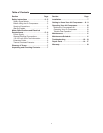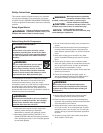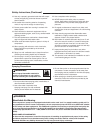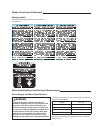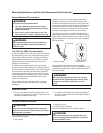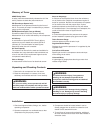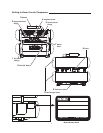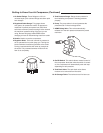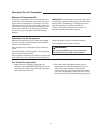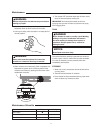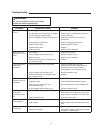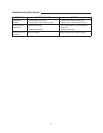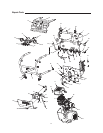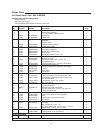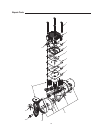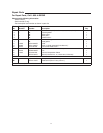
10
Operating Your Air Compressor
Moisture in Compressed Air
Moisture in compressed air will form into droplets as it
comes from an air compressor pump. When humidity is
high or when a compressor is in continuous use for an
extended period of time, this moisture will collect in the
tanks. When using a paint spray or sandblast gun, this
water will be carried from the tanks through the hose,
and out of the gun as droplets mixed with the spray
material.
IMPORTANT: This condensation will cause water spots
in a paint job, especially when spraying other than water
based paints. If sandblasting, it will cause the sand to
cake and clog the gun, rendering it ineffective.
A filter in the air line, located as near to the gun as
possible, will help eliminate this moisture.
Operating Your Air Compressor
Make sure the tank drain valve is closed, the regulator
knob is turned fully counterclockwise, and the On/Off
switch is in the Off position.
Plug compressor into a dedicated 15 Amp (minimum)
circuit.
Turn On/Off switch to the On position. The compressor
will now start building pressure.
After compressor reaches cut-off pressure, install a hose
(with the desired air tool attached) into the outlet fitting.
Adjust the regulator knob to the desired pressure.
The compressor is now ready to operate.
!
WARNING:
Do not over-pressurize any air tool. Consult air
tool instructions for proper air tool pressure.
For Trouble-Free Operation
1. Read instructions: Carefully read through this
operator’s manual BEFORE OPERATING the new air
compressor. It contains information about operation
and maintenance of the unit.
2. Drain tanks daily: Depressurize system prior to
draining tanks by manually releasing air from the
safety valve. Open tank drain valve and drain
moisture from tank. This helps keep oil and moisture
out of the compressed air system. Be sure to close
tank drain valve tightly before operating compressor.



